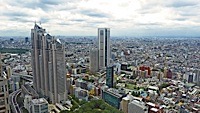
This position is perfect for you if you are ready for a challenge and are committed to making significant improvements in the operations of one of the world's premier research and science organizations. NIST is located on a beautiful campus in Gaithersburg, Montgomery County, MD. This is a great opportunity to have a tremendous impact on an agency's programs and enjoy the benefits of working outside the Washington beltway.
The National Institute of Standards and Technology (NIST) plays a vital role in supporting technical innovation -- critical to the future economic security of our Nation. NIST accomplishes its mission through a broad interdisciplinary approach leveraging its physical sciences and engineering expertise. Its broad scope and technical expertise is matched by few other laboratories in the world. NIST is organized around scientific and engineering disciplines and encourages research programs that leverage the full talent and expertise across the organization.
NIST programs are at the scientific forefront nationally and internationally, and they provide an important contribution in support of industry, academia, and other government entities. NIST is a dynamic and complex organization undertaking research and scientific endeavors in a multidisciplinary, diverse culture. NIST's human resources are also diverse with over 2,800 full-time employees and over 1,500 foreign and domestic guest researchers, contractors, and other associates. The primary facilities are located in Gaithersburg, Maryland and Boulder, Colorado.
The Director, Technology Innovation Program (TIP) serves as the executive responsible for managing and leading this critical program for NIST. The TIP was established as part of the America COMPETES Act (P.L. 110-69) to assist United States businesses and institutions of higher education or other organizations, such as national laboratories and nonprofit research institutions, to support, promote, and accelerate innovation in the United States through high-risk, high-reward research in areas of critical national need.



















